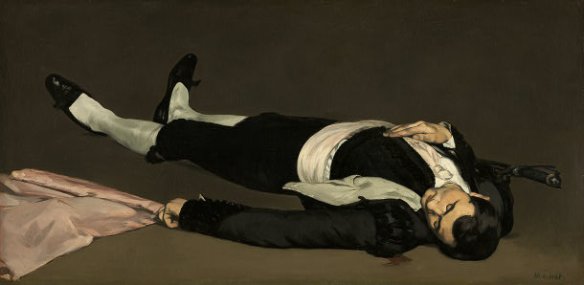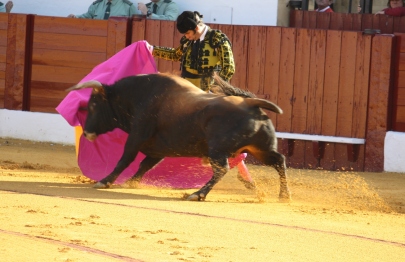Given the large number of people who have wandered to this blog in search of answers about the so-called ‘conversion’ photograph of Álvaro Munera from bullfighter to animal rights activist – which is actually not of him at all – I thought that I would set another record straight that has been bothering me for a while.
When the philosopher of animal rights, Mark Rowlands, was mistakenly commissioned by The Times Literary Supplement to review my book Into The Arena: The World Of The Spanish Bullfight, one of the multitude of mistakes he made, both logical and empirical, was his statement that there have been only fifty-two bullfighters killed or fatally injured in the ring since 1700.
(Ironically, he also said that my friend and former teacher, the matador Juan José Padilla, was more likely to die on the way to the bullring than within it. This was published eight days before Padilla had the side of his face destroyed, skull multiply fractured, and eye removed from behind, as the other recent posts on this blog show.)
However, since I had never been macabre enough to try to add up the exact number of bullfighters killed in the ring, I did not have a statistic to hand to counter his general claim. I did, however, know the origin of Rowlands’ statement.
The American author on bullfighting Barnaby Conrad wrote in The People’s Almanac, No.2, Issue 2 (1978):
While hundreds of bullfighters have died in the arena, of the approximately 325 major matadors since 1700, only 52 have been killed in the arena.
I picked Rowlands up on his misleading misquotation in our exchange on the letters’ page of the TLS here (along with a few of his many other errors.) In his reply, he seemed not to have even understood that he was misquoting someone else’s statistic:
I say fifty-two in the last 300 years, Fiske-Harrison says (vaguely) “hundreds”… Fiske-Harrison’s language gives a false impression of the dangers to bullfighters.
Personally, I suspect that his intial error was actually to go on Google and take the first result he could find – Wikipedia – and, when challenged, he realised that this is absolutely no excuse for a tenured professor writing in a respected literary magazine which at one time took its reviews from the likes of T. S. Eliot, Virginia Woolf and Henry James.
Whilst I still do not know exactly how many bullfighters have died in the past three hundred years, I do now know what the minimum number is: it is 533.
That, by the way, is just the professionals notable enough to report on. The figure does not include amateurs killed in plazas and on ranches. And we can safely assume – looking that the documentary history of Spain and Latin America in the past three hundred years – that there were plenty of professionals whose deaths went unreported, especially in pre–antibiotic era when death would have come later from gangrene, tentanus and the other terrible routes which Hemingway described with such grim accuracy in Death In The Afternoon However, I think that speculating on figures without evidence is an excuse for bad scholarship.
In terms of evidence, every one of these 533 is described in detail in a four volume Spanish work entitled “Victims of Bullfighting.” All four volumes are available online here, and the numbers easily verifiable via the contents’ pages even for non-Spanish speakers.
http://www.fiestabrava.es/pdfs/MVT-1.pdf
http://www.fiestabrava.es/pdfs/BVT-1.pdf
http://www.fiestabrava.es/pdfs/PVT-1.pdf
http://www.fiestabrava.es/pdfs/NVT-2-1.pdf
Alexander Fiske-Harrison












